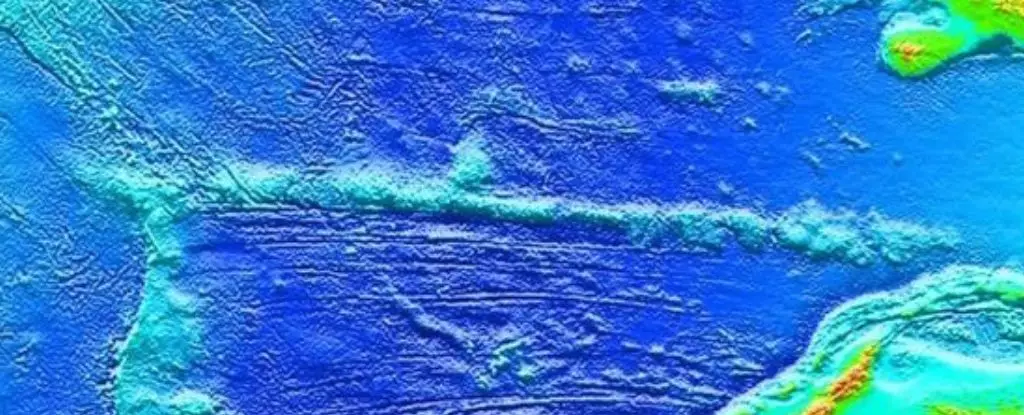The Indian Ocean, known for its vastness and ecological diversity, conceals incredible geological wonders beneath its surface that have continually perplexed scientists. Among these, the Ninetyeast Ridge stands out as a submerged mountain range stretching 5,000 kilometers (3,107 miles), outmatching even the grandeur of the North American Rockies. Recent scientific inquiry has illuminated the formation of this ridge, revealing its origins and the dynamic forces at play deep within the Earth’s mantle.
Seamounts, the underwater volcanoes dotting our oceans, are fascinating geological structures that arise from volcanic activity. Traditionally, the formation of these seamounts was attributed to “hotspots,” localized areas of intense heat within the Earth’s mantle. The magma from these hotspots bubbles up, forming volcanoes as tectonic plates drift over a stationary hotspot. This process is often likened to the movement of fabric over a stationary sewing machine needle, where the needle leaves a trail of stitches behind.
However, this conventional understanding has been challenged, particularly with the findings related to the Ninetyeast Ridge. Instead of following the traditional piping model of a stationary hotspot, the research suggests that the hotspot responsible for the Ninetyeast Ridge bears more resemblance to a moving fountain pen, marking its path across the Earth’s crust as it migrates through the mantle.
At the heart of this geological enigma lies the Kerguelen hotspot, which has been identified as the primary contributor to the creation of the Ninetyeast Ridge. Previous studies hinted at the possibility of the hotspot’s movement but lacked definitive evidence. Recent research conducted by an international team of scientists from Australia, Sweden, China, and the US has used advanced techniques to analyze basalt samples from the ridge, bringing clarity to the nature of the Kerguelen hotspot’s movement.
One of the most striking revelations from this research is the acknowledgment that the Kerguelen hotspot did not remain stationary beneath the Indian Plate during its drift northward. Geological dating suggests that between 83 and 66 million years ago, volcanic activity at the peaks of the ridge occurred at a rate significantly slower than that of the surrounding seafloor spreading. This conclusion indicates that the mantle plume associated with the hotspot was indeed moving across the mantle rather than simply sitting in one place. This insight reshapes our understanding of hotspot mechanics and highlights the complexity of tectonic interactions.
The implications of this movement are profound. Researchers believe that as the Indian Plate shifted northward, the Kerguelen hotspot was dynamically interacting with the Indian-Antarctic spreading ridge. This interaction led to the plume’s materials being expelled along the ridge, contributing to the formation of the distinctive underwater geography we observe today. However, around 66 million years ago, this connection waned as the spreading ridge moved away, temporarily disconnecting the plume’s activity.
Interestingly, the research indicates that the plume was later re-engaged, this time by a western spreading ridge, further illustrating the complex interplay between tectonic plates and geological formations. By around 42 million years ago, the ongoing activity of the Kerguelen hotspot had etched a noticeable vertical line across the Indian Ocean, effectively splitting it into eastern and western halves.
The newfound understanding of the Ninetyeast Ridge holds significant implications for the broader field of geoscience. For decades, geologists relied on outdated models to explain tectonic movements based on rough age estimates of the ridge. The revelations stemming from this research allow for a more nuanced perspective on Earth’s tectonic history.
The study of the Ninetyeast Ridge exemplifies the ever-evolving nature of geological research. While this submerged mountain range may remain hidden beneath the surface of the Indian Ocean, its formation underscores complex interactions within the Earth’s mantle that challenge and enrich our understanding of our planet’s geological history. As researchers continue to explore these hidden depths, the mysteries of underwater formations like the Ninetyeast Ridge will likely lead to further paradigm shifts in our comprehension of Earth’s dynamic systems.

